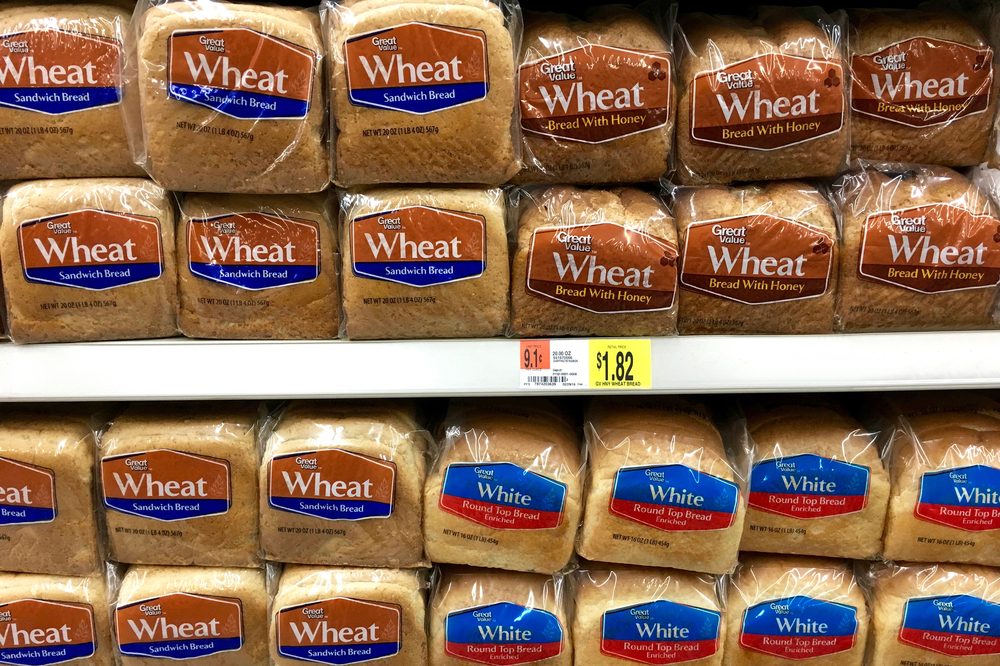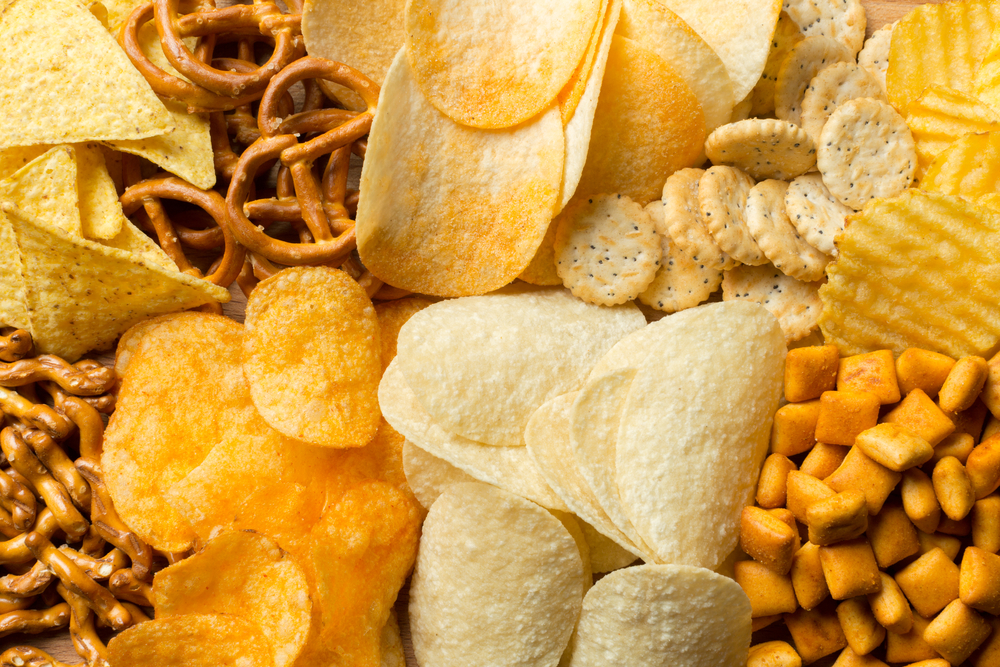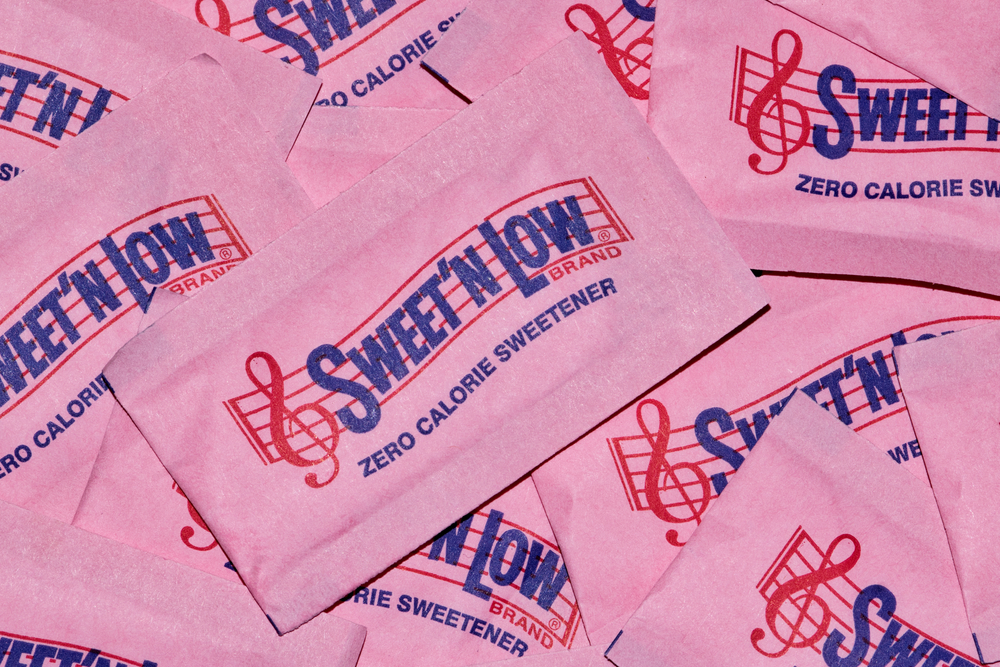Copyright © Everyday Narrative 2024. All rights reserved.
Copyright © Everyday Narrative 2024. All rights reserved.
- An Everyday Narrative Gallery Special -
1. Soda and Sweetened Beverages

Soda and sweetened beverages fall into the category of ultra-processed foods because they’re manufactured using several artificial ingredients and processes. These drinks typically contain a mixture of added sugars, such as high fructose corn syrup, along with artificial flavours, colourings, and preservatives that enhance their taste and extend their shelf life.
To identify if a soda or sweetened beverage is ultra-processed, check the label for key ingredients such as added sugars (listed as high fructose corn syrup, sucrose, etc.), artificial sweeteners (like aspartame or sucralose), and any artificial colours or flavours. These ingredients are usually a clear indication that the beverage has undergone significant processing.
2. Packaged Bread and Buns

Packaged breads and buns are often classified as ultra-processed due to their manufacturing process, which includes the use of refined ingredients, preservatives, and additives to enhance flavour, texture, and shelf life. These products frequently contain refined flours and sugars, dough conditioners, and other chemical agents that you wouldn’t typically use when baking bread at home.
To determine if packaged bread or buns are ultra-processed, examine the ingredient list on the packaging. Look out for terms like “enriched flour,” which indicates refined grains, preservatives like calcium propionate, high fructose corn syrup, and any additives with chemical-sounding names such as mono- and diglycerides or azodicarbonamide, which are used to improve texture and extend freshness.
3. Breakfast Cereals

Breakfast cereals are often considered ultra-processed due to the extensive processing methods they undergo and the ingredients used to enhance flavour, appearance, and shelf life. These cereals typically start from refined grains and are then subjected to extrusion (a high-temperature process that shapes and textures the cereal) and are often coated with sugar and artificial flavours.
To determine if a breakfast cereal is ultra-processed, look at the ingredient list for signs such as high levels of added sugars, artificial colors and flavors, preservatives, and “fortified” with vitamins and minerals in forms not found in nature. The presence of these additives usually indicates significant processing.
4. Flavoured Yogurt

Flavoured yogurt often qualifies as ultra-processed due to the addition of artificial flavours, colours, preservatives, and especially sugars or artificial sweeteners that enhance its taste and appearance. These ingredients significantly alter the natural composition of yogurt, moving it away from its original, minimal processing state.
When checking if flavoured yogurt is ultra-processed, look for ingredients like artificial flavours, colorants (such as carmine or Red #40), preservatives (like potassium sorbate), and various forms of added sugars listed as high fructose corn syrup, sucrose, or even ‘fruit concentrates’. These additives are common in many commercially available flavoured yogurts.
5. Instant Noodles

Instant noodles are considered ultra-processed due to their manufacturing process, which often involves deep-frying the noodles to dehydrate them, and they are accompanied by flavour packets that contain a high level of preservatives, artificial flavours, and salt. These elements are designed to enhance taste and prolong shelf life, making them a hallmark of ultra-processed foods.
When checking if instant noodles are ultra-processed, look for ingredients such as palm oil, monosodium glutamate (MSG), artificial flavours, and preservatives like tertiary-butylhydroquinone (TBHQ). A long list of chemical ingredients, many of which are hard to pronounce, is usually a clear sign of a highly processed food product.
6. Frozen Pizza

Frozen pizza is considered ultra-processed due to its extensive list of ingredients that often include artificial flavours, preservatives, and additives designed to enhance flavour and ensure a long shelf life. These pizzas are pre-prepared, cooked, and then frozen, involving multiple stages of industrial processing.
To determine if a frozen pizza is ultra-processed, look at the ingredients list on the packaging. Common indicators include additives like monosodium glutamate (MSG), artificial flavourings, and preservatives such as sodium benzoate. Additionally, many frozen pizzas contain hydrogenated oils and excessive amounts of added sugars and salts.
7. Microwaveable Meals

Microwaveable meals are considered ultra-processed because they are extensively prepared and often contain a range of artificial ingredients to preserve flavour and extend shelf life. These meals are typically pre-cooked and just require reheating, which means they can include preservatives, flavour enhancers, and stabilizers that you wouldn’t typically use in home cooking.
When checking if a microwaveable meal is ultra-processed, look for ingredients like artificial flavours, preservatives (such as sodium benzoate), flavour enhancers (like monosodium glutamate, or MSG), and numerous additives that are hard to recognize or pronounce. These are indicators that the meal has been significantly altered from its original state.
8. Chicken Nuggets

Chicken nuggets are a classic example of ultra-processed food because they are not simply chunks of chicken but are made from finely ground chicken meat that is mixed with various ingredients and preservatives before being shaped, breaded, and fried. The process often includes the addition of fillers, flavour enhancers, and binders such as sodium phosphates to retain moisture, as well as artificial flavours and colourings to make them more appealing and uniform.
When trying to determine if chicken nuggets are ultra-processed, look at the ingredient list on the packaging. Besides chicken, you might find a long list of items like corn starch, wheat flour, oils, sugar, artificial flavours, and preservatives like sodium benzoate. These additives are good indicators that the product has undergone extensive processing to alter its state significantly from its original form.
9. Fish Sticks

Fish sticks are typically considered ultra-processed due to the way they are made. They are often created from minced fish that is then shaped, breaded, and pre-cooked in oil before being frozen. This process includes adding various preservatives, artificial flavours, and stabilizers to enhance taste and prolong shelf life.
When trying to identify if fish sticks are ultra-processed, you should look at the ingredient list on the package. Common indicators include names of preservatives like sodium tripolyphosphate, artificial flavour enhancers, and ingredients that improve texture or colour, such as modified starches and hydrogenated oils.
10. Canned Soup

Canned soups are considered ultra-processed due to their extensive manufacturing processes, which often involve the addition of high levels of sodium, preservatives, and artificial flavours to enhance taste and shelf life. These ingredients allow the soups to remain stable on store shelves for extended periods but take them far from their fresh, homemade counterparts.
To determine if a canned soup is ultra-processed, inspect the ingredient label for high sodium content, preservatives like monosodium glutamate (MSG), and ingredients that are not typically used in home cooking, such as artificial flavors and colorings. A long list of ingredients that are hard to pronounce is also a good indicator of an ultra-processed product.
11. Hot Dogs

Hot dogs, sausages, and salami are categorized as ultra-processed foods because they are made from meat that has been extensively modified through salting, curing, fermentation, smoking, and the addition of preservatives and flavour enhancers. These processes significantly alter the original form of the meat, often incorporating various chemical ingredients to improve shelf life, flavour, and appearance.
To determine if these meats are ultra-processed, look at the ingredient list for items such as sodium nitrate, monosodium glutamate (MSG), and other artificial preservatives or flavour enhancers. A long list of ingredients, especially those that are hard to pronounce or sound like chemical compounds, usually indicates a high degree of processing.
12. Boxed Macaroni and Cheese

Boxed macaroni and cheese is considered ultra-processed due to its preparation and the ingredients used. This convenience food often contains dried pasta and a powdered or processed cheese mix, which includes artificial colours, flavours, emulsifiers, and preservatives to enhance taste, appearance, and shelf stability.
To determine if boxed macaroni and cheese is ultra-processed, check the ingredient list for additives such as artificial flavours, phosphates, and colours like Yellow 5 or Yellow 6. These components are not typically found in natural cheese or homemade pasta dishes and indicate a high level of processing.
13. Chips and Pretzels

Packaged snacks such as chips and pretzels are ultra-processed with added oils, salts, and flavour enhancers to extend shelf life and enhance taste. You can identify these as ultra-processed by ingredients like monosodium glutamate (MSG), artificial flavours, and preservatives listed on their packaging.
14. Ice Cream

Ice cream is often ultra-processed to enhance its flavour, texture, and shelf life. Manufacturers add artificial flavours, colours, and stabilizers like guar gum and carrageenan. These ingredients help maintain a creamy texture and prevent ice crystallization during storage.
To identify ultra-processed ice cream, look for long lists of ingredients including artificial sweeteners, stabilizers, and emulsifiers. Names like “propylene glycol” or “cellulose gum” are common in more heavily processed varieties.
15. Baked Cakes and Cookies

Commercially baked cakes and cookies are ultra-processed with additives to extend their shelf life and enhance flavour and texture. Ingredients often include artificial flavours, emulsifiers, and trans fats, which help maintain freshness and a desirable mouthfeel.
16. Candy Bars

Candy bars are ultra-processed with various sugars, fats, and artificial additives to create appealing flavours and textures. They often include preservatives to prolong shelf life and colours to make them more attractive.
To spot ultra-processed candy bars, look for “high fructose corn syrup,” “artificial colours” (like Red 40, Blue 1), and “preservatives” in the ingredient list.
17. Ready Made Sauces and Dressings

Ready-made sauces and dressings are ultra-processed to enhance taste and shelf life with the addition of sugars, salts, and chemical preservatives. These components help maintain flavour consistency across batches and extend usability.
Check labels for high levels of sodium, sugar, and ingredients like “monosodium glutamate” (MSG), “potassium sorbate,” and “sodium benzoate,” which suggest heavy processing.
18. Artificially Sweetened Desserts

Artificially sweetened desserts are ultra-processed using synthetic sweeteners and other chemical additives to reduce calorie content while maintaining sweetness. These products often contain thickeners and stabilizers to mimic the texture of sugar-containing desserts.
Look for ingredients such as “aspartame,” “sucralose,” or “acesulfame potassium” as indicators of artificial sweetening. Other additives like “xanthan gum” or “carrageenan” are also common.
19. Energy Bars

Energy bars are often ultra-processed to be convenient sources of energy, using isolated proteins, refined sugars, and preservatives. They are designed to have a long shelf life and provide a quick energy boost.
Identify ultra-processed energy bars by looking for ingredients like “soy protein isolate,” “invert sugar syrup,” and “preservatives” such as “tocopherols.”
20. Powdered and Shelf-stable Meal

These meals are ultra-processed to ensure convenience and long-term storage, containing preservatives and flavour enhancers. They are engineered for stability under various conditions without spoilage.
Ingredients to watch for include “sodium aluminosilicate,” “butylated hydroxyanisole” (BHA), and “butylated hydroxytoluene” (BHT), which are chemical preservatives indicating a high degree of processing.
21. Processed Cheese Products

Processed cheese products are made with emulsifiers, preservatives, and artificial colours to improve texture, meltability, and shelf life. These additives make the cheese uniform and more convenient for various culinary uses.
Check for “phosphates,” “sodium citrate,” and “artificial colours” like “annatto” on labels to identify highly processed options.
22. Pre-Packed Deli Meats

Pre-packaged deli meats are ultra-processed with high amounts of salt, nitrates, and other preservatives to extend their shelf life and enhance colour and flavour. These additives help prevent spoilage and maintain an appealing appearance.
Ingredients such as “sodium nitrite,” “sodium phosphate,” and terms like “cured” or “smoked” can indicate heavy processing and are often found in the ingredient lists of these products.
23. Instant Oatmeal with Flavourings

Instant oatmeal packets are ultra-processed to provide convenience and extended shelf life, often containing added sugars, artificial flavours, and salt. These additives make the oatmeal more palatable and quick to prepare, appealing to busy consumers.
To identify ultra-processed varieties, look for ingredients such as “natural and artificial flavours,” “sugar,” and less common additives like “sodium caseinate,” which are not present in plain rolled or steel-cut oats.
24. Frozen Dinners

Frozen dinners are ultra-processed for convenience, containing additives that enhance flavour and appearance while also ensuring safety and longevity in the freezer. These meals typically include a variety of preservatives, sodium, and sometimes artificial flavours.
Check the ingredient list for terms like “sodium benzoate,” “disodium inosinate,” and “disodium guanylate.” A long list of ingredients often indicates a highly processed product.
25. Vegetarian and Vegan Meat Substitutes

Heavily processed vegetarian and vegan meat substitutes often contain artificial ingredients to mimic the texture and flavour of real meat. These can include texturized vegetable protein, artificial flavours, and stabilizers.
To determine the level of processing, look for long ingredient lists that include items like “methylcellulose,” “soy protein isolate,” or “pea protein isolate,” as well as various flavour enhancers and colouring agents.
26. Pasta Sauce Jar

Jarred pasta sauces are often ultra-processed with added sugars, oils, preservatives, and flavour enhancers to improve taste and extend shelf life. These ingredients help the sauce maintain consistency and prevent spoilage over extended periods.
Ingredients like “potassium sorbate,” “calcium chloride,” and “high fructose corn syrup” are common in heavily processed sauces. Reading labels carefully can help identify these additives.
27. Margarine

Margarine is created through a high level of processing, turning vegetable oils into a spreadable form using emulsifiers and artificial colours. This process often involves the addition of preservatives to enhance stability and shelf life.
Look for “partially hydrogenated oils,” “mono- and diglycerides,” and artificial colours listed among the ingredients, which are indicative of ultra-processing.
28. Diet Soda

Diet sodas are ultra-processed, containing artificial sweeteners like aspartame, sucralose, or saccharin, which provide sweetness without the calories. They also often include preservatives and artificial colours to enhance taste and appearance.
Ingredients to look out for include “acesulfame potassium,” “aspartame,” and “caramel colour.” These components are hallmark signs of a highly processed beverage.
29. Pre-mixed Alcoholic Beverages

Pre-mixed alcoholic beverages are ultra-processed, containing not only alcohol but also high levels of sugars, artificial flavours, and colours to make them more appealing and ready-to-drink.
Ingredients such as “sodium benzoate” (a preservative), “artificial flavours,” and “certified colours” are common and should be noted when assessing the level of processing.
30. Pre-Packed Baked Goods

Pre-packaged baked goods are ultra-processed with a range of additives including emulsifiers, preservatives, and artificial flavours to extend shelf life and enhance flavour and texture. They typically contain trans fats and high amounts of sugars.
Look for ingredients like “sodium stearoyl lactylate,” “mono- and diglycerides,” and “artificial flavours” on the labels, which are clear indicators of heavy processing.
Gallery Specials
Latest Articles
- Disney Remakes the Timeless Classic ‘Snow White’
- Here’s what to expect from Season 4 of Slow Horses, only on Apple TV+
- Marvel’s ‘Agatha All Along’ coming soon
- Adam Sandler Announces ‘Happy Gilmore 2’
- Jennifer Lopez files for divorce from Ben Affleck to end her fourth marriage
- On this day in 1995, the Battle of Britpop reached its climax
- Vince Vaughn Returns in the New Dark Apple TV+ Comedy ‘Bad Monkey’
- Matt Damon and Casey Affleck lead a star-studded cast in ‘The Instigators’
- The anticipation builds for ‘The Last of Us’ Season 2
- Has Simone Biles cemented her place as the greatest American Olympian of all time?
- Anticipation grows for the Disney sequel ‘Moana 2’
- A battle begins at Royal Troon for The Open Golf Championship 2024
- The evolution of binge-watching
- Tom Hanks reunites with Robin Wright in ‘Here’
- Taylor Swift’s ‘Eras Tour’ is a phenomenal success















